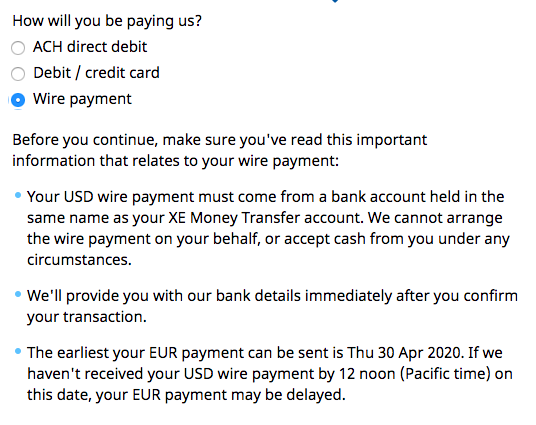How Do I Spot an Opportunity?
04-02-2021 | treasuryXL | XE |
There are a few signs and behavioral patterns that can indicate someone who would be a good fit to transfer money with XE.
Finding opportunities to turn prospects into Xe customers can be difficult. Though some people do have plans to transfer money overseas and may be in search of the right provider to facilitate their transfers, many other people as, and some may be perfectly satisfied using their bank or a wire transfer to send their money overseas. There are a few things that you can bring up in your discussions or keep your eyes (and ears) open for in order to make the search a little easier. Let’s talk about how you can find the right opportunities.
Spotting a potential opportunity
Though everyone is different, there are a few signs and behavioral patterns that can indicate someone who would be a good fit to transfer money with Xe.
There’s one question that reigns above all others: do they make international payments? This is the fundamental question, and the first one you should look to answer. Do they make international payments or deal with foreign currencies in any capacity? Then they are someone who could benefit from a fast, cost-effective, and easy-to-use money transfer solution.
Signs of a potential opportunity: individual edition
Individuals and businesses will have different signs, and different uses for money transfer. Some examples of people who fit this category include:
-
Clients living in other countries
-
Business people with clients who live overseas
-
Expats from another country
-
People who own property in another country
-
People who work with or get paid by a company in another country
-
People who have family overseas
-
People who have shares or dividends coming from another country
-
People receiving an inheritance, gift payments, or other sums of money from overseas
-
Individuals selling property with plans to relocate abroad
-
People purchasing goods from overseas
-
Workers on temporary overseas work secondments
-
People with overseas pensions
-
Account holders of multi-currency bank accounts.
Identifying someone who has a need for international money transfer is the first step. The next step is convincing them that they shouldn’t just use their local bank branch or the first provider they come across: they should use Xe.
There are two key areas to focus on:
-
Exchange rates
-
Bank costs associated with international payments.
Banks and other providers often set rates that favor themselves, not the client. In addition, these institutions often come with numerous additional fees (sometimes even hidden within the transaction). On the other hand, the Xe rate comes straight from the live currency markets, and is a true, honest reflection of the mid-market rate, with no hidden margins. In addition, there are no hidden fees with Xe: what your client sees is what they will get.
Signs of a potential business opportunity
Individuals aren’t the only ones who need money transfer; there are plenty of businesses who could benefit from working with Xe. Some examples of good opportunities include:
-
Clients with overseas offices
-
Businesses with a globally-located workforce
-
Managers of international payroll
-
Businesses that import or export
-
Offshore investors
-
Businesses with multi-currency bank accounts
-
Any business that sends and/or receives international payments.
Within the realm of international payments, there are a few common concerns that could be worth discussing further. Consider discussing:
-
Do they bill clients in your local currency or their local currency?
-
Do they talk about increased costs overseas, or decreased profits on exports?
-
Are they concerned with the bank costs associated with making international payments?
These questions can help you to better understand what they’re looking for from a money transfer and FX provider, whether it’s improving their profits, cutting out unnecessary costs, or ensuring that they aren’t exposed to FX risk when they make their international payments.
Are you curious to know more about XE?
Maurits Houthoff, senior business development manager at XE.com, is always in for a cup of coffee, mail or call to provide you detailed information.
Visit XE.com
Visit XE partner page










